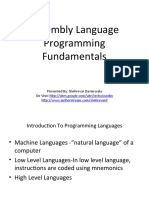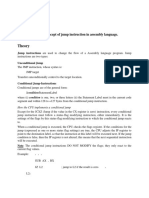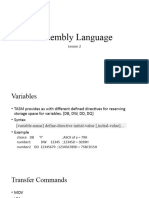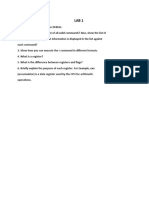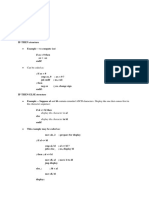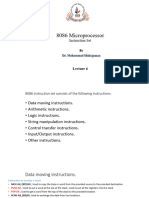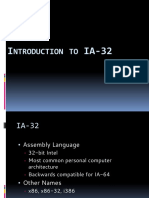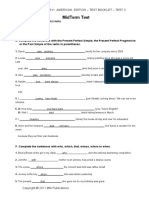0% found this document useful (0 votes)
389 views7 pagesExperiment 2 Directives - Indicates How An Operand or Section of A Program Is To Be Processed by The
The document discusses various assembly language directives, interrupts, and common instructions used in assembly language programming. It provides details on directives like model that define memory models. It describes interrupts for displaying characters, clearing screens, and terminating programs. Common instructions covered are INC, DEC, ADD, LEA, JMP, LOOP, conditional jumps, CMP, CALL, and RET. Examples are given to demonstrate the use of interrupts and instructions in sample assembly language programs.
Uploaded by
Casandra Victorio Kua RNCopyright
© Attribution Non-Commercial (BY-NC)
We take content rights seriously. If you suspect this is your content, claim it here.
Available Formats
Download as DOC, PDF, TXT or read online on Scribd
0% found this document useful (0 votes)
389 views7 pagesExperiment 2 Directives - Indicates How An Operand or Section of A Program Is To Be Processed by The
The document discusses various assembly language directives, interrupts, and common instructions used in assembly language programming. It provides details on directives like model that define memory models. It describes interrupts for displaying characters, clearing screens, and terminating programs. Common instructions covered are INC, DEC, ADD, LEA, JMP, LOOP, conditional jumps, CMP, CALL, and RET. Examples are given to demonstrate the use of interrupts and instructions in sample assembly language programs.
Uploaded by
Casandra Victorio Kua RNCopyright
© Attribution Non-Commercial (BY-NC)
We take content rights seriously. If you suspect this is your content, claim it here.
Available Formats
Download as DOC, PDF, TXT or read online on Scribd
/ 7

